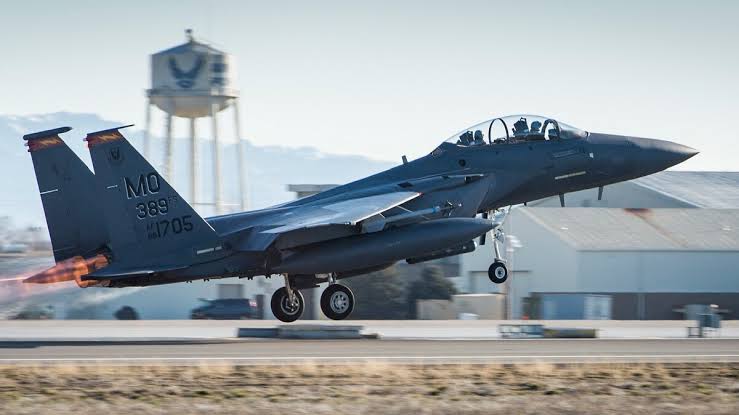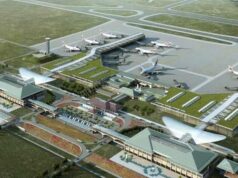Making IAF fit for a two front war with 54 Combat Squadrons

By
Colonel Awadhesh Kumar
India swears no allegiance to USA or any other country and will never will. India will only share commitment to democracy and friendship based on equality. This stance of India is seen as an affront by many in the Biden Administration and the American Political Class.
So in spite of the Govts of India and the United States co-signing a deal to manufacture General Electric GE F-414 jet engines in India for the Tejas-2 fighter aircraft, with eighty percent of technology transfer may eventually have some glitches and come with some riders. The deal also involved the purchase of 31 MQ-9B drones.
The details of the technological collaboration on the F-414 engine are unclear, and so is the transfer of technology under US ITAR. Even the actual capabilities to be provided on the Predator drones and its overall price seems to be under negotiations. These drones are going to be essential gap fillers for India till induction of own armed drones.
The IAF has a sanctioned authorization of 45 combat Squadrons, which is presently down to a dangerous level of 33 Squadrons only. Whereas IAF needs to be prepared for a two front war simultaneously facing China and Pakistan.
To do so, wherein IAF must hold PLAAF at bay and simultaneously neutralize PAF, by all estimates it needs 54 combat Squadrons. To simultaneously take combat deep into both adversaries, IAF must be provided with 63 Combat Squadrons.
Therefore by end 2030, the Govt of India must strive to reach as close as possible to have 54 combat Squadrons.
Here comes both France and Russia, our trusted friends since long. When India had faced USA led Western sanctions following nuclear tests in 1998, Russia and France, had openly opposed the sanctions.
Moreover, when India received a waiver from the Nuclear Suppliers Group [NSG] in 2008 to conduct civil nuclear trade, France was the first country to sign a civil nuclear agreement with India.
The NSG has stopped supplying enrichment and reprocessing technology to non-signatory countries of the Non-Proliferation Treaty. Yet, France continues its nuclear cooperation with India, not influenced by the NSG’s move.
The defence sectors of France and India have a long history, dating back to the 1950s and 60s. France even gifted 104 Ouragan aircraft to the Indian Air Force, which India renamed “Toofani”. In 1998, a High Committee on Defence Cooperation was established to further strengthen their ties.
France is reportedly offering a full transfer of technology without ifs and buts for the co-development of a new 110kN high-thrust jet engine to power the AMCA fifth-generation stealth jet. The French are offering the brand-new engine with advanced features and materials and a full manufacturing base in India.
France is also ready to share its complete knowledge of Rafale fighters along with creating a new manufacturing base in India. This will speed up technological growth in India with respect to jet engines. The French Company Safran, is already established in India with an MRO facility for LEAP engines and the M-88 engine.
It also plans to set up a gas turbine technology centre in India. This centre will have full design capabilities and high-end metallurgy software tools. French President Emmanuel Macron has reportedly approved Safran to partner with India on a joint project.
This involves the creation of an engine for India’s twin-engine Advanced Multirole Combat Aircraft [AMCA] and the twin-engine deck-based fighter for Indian aircraft carriers.
Prime Minister Narendra Modi is set to visit France in mid July. During the visit it is expected that the agreement to buy 26 Rafale Marine [M] for India’s aircraft carrier, INS Vikrant will take place. This isn’t surprising, as the Indian Navy prefers the Rafale-M over the obsolete US Boeing’s F/A 18 Super Hornet fighter.
France has pledged unrestricted access to sensitive matters in the co-production of an engine. This is a testament to France’s partnership approach. France has a solid reputation as a reliable defence supplier to India, unlike the United States, which has been inconsistent as a military supplier to India and its allies. The US has previously disrupted or delayed supply of parts and training.
Therefore while HAL should make a move to ramp up its production line to manufacture 83 x Tejas Mk1 A and additional 57 x Tejas Mk1A ie a total of 140 fighters by 2030. This means 28fighters per year with effect year 25-26. This can be done as reports indicate that HAL has already created the capability to manufacture 24 fighters per year.
Now as things stand both ADA and HAL will have to put in extra effort to kick start the manufacturing of Tejas Mk2 and produce around 30 fighters per year with effect 27-28. This will provide 5x Mk2 Squadrons to the IAF.
With the above the IAF line up by end of 2030 should be as under with 42 combat Squadrons :-
SU 30 MKI — 15 x Squadrons
Mirage 2000- 3 x Squadrons
MiG 29 – 4 x Squadron (one from refurbished ones)
Jaguar — 6 x Squadrons
Tejas Mk1 — 2 x Squadron
Tejas Mk1A — 7 x Squadron
Tejas Mk2 — 3 x Squadron
Rafale — 2 x Squadron
Here in must step Modi the Statesman by signing an accord for 108 x Rafales for the IAF. out of this at least 72 fighters be of Make in India variety. Similarly India must sign an accord with Russia for supply of 108x SU 57 MkI in similar manner.
These should be the last of the fighter imports by India from any country. Though money will have t be spent, these two deals will provide the 12 x Squadrons needed to reach the strength of 54 Combat Squadrons.
The above will also geo strategically balance the existing world.



